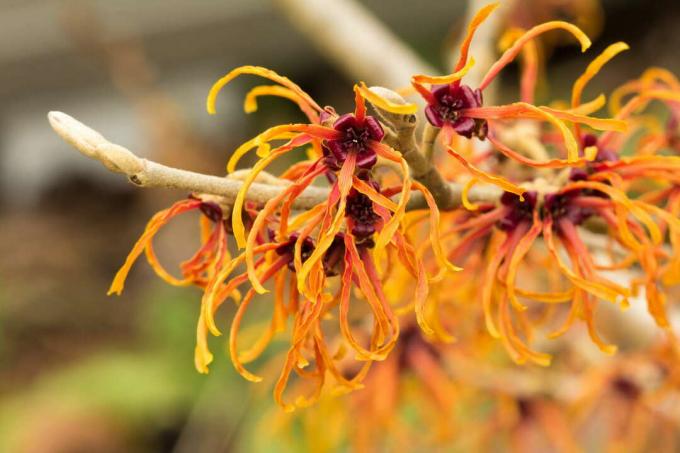The witch hazel enchants your garden with its sea of flowers. But how do you cut the brightly blooming witch hazel correctly and what should you watch out for?

The witch hazel (witch hazel) fills your home garden with the first dashes of color and fragrance with its delicate blossoms from December to March. But the noble winter bloomer only grows very slowly and does not sprout again from old wood. You should therefore cut back as rarely as possible and if only a little. Even without help, the plants form beautiful, funnel-shaped, upright, loosely branched crowns. A cut can even lead to the loss of this typical growth. Therefore, it is best to only use scissors if a branch is to be used as a vase decoration from time to time or if you want to keep your plant small. However, things can go wrong. So that your witch hazel does not suffer unnecessarily, we have put together everything you need to know for a successful cut.
Witch hazel: when to prune?
If you want to prune your witch hazel a little, spring after flowering is recommended. It is best to cut back your witch hazel regularly and only moderately. This is much better tolerated than severe pruning.

- Felco secateurs: Manual lace pruning shears recommended for all types of pruning. In addition to plastic-coated handles, it has a precision blade and anvil blade adjustment system.
- Felco fruit tree and secateurs: Heavy duty fruit tree and secateurs with wire cutter, sap groove and micrometer adjustment.
- Gardena telescopic arm scissors: Practical secateurs for effortlessly cutting tall trees and dense shrubs from the ground.

Felco Secateurs No 11, Red, 210mm, 250g
43,46€
Details →

Felco Orchard And Secateurs No 6
31,99€
Details →

GARDENA Telescope StarCut 410 plus
84,45€
Details →
Cutting witch hazel: instructions on how to proceed
When pruning your witch hazel, you need to control yourself. After a radical pruning, the plant is very likely to wither. There will also be no flowering in the following years or only very sparsely. If the plant is weakened too much by the pruning, it will even die. With the expensive and slow-growing noble shrubs, this is incredibly annoying. It is therefore better to cut your plant very carefully into the desired shape. It is best to lightly thin out the shrub after flowering. You can't go wrong with removing old, dry branches either. The sensitive witch hazel will also thank you for that. Just make sure that you only use very sharp and clean tools for cutting because of the poor wound healing. But even with the right tool, larger cuts should be avoided. Therefore, only young shoots are pruned when topiary, because the more mature and thicker the branches, the more problematic the cut is for the plant. The resulting wounds are best closed with a little wax.

Notice: A good alternative to pruning is planting small, permanent varieties like 'Arnold Promise' or 'Diane'.
You can find more information about planting witch hazel and the different varieties in our special article on witch hazel.
